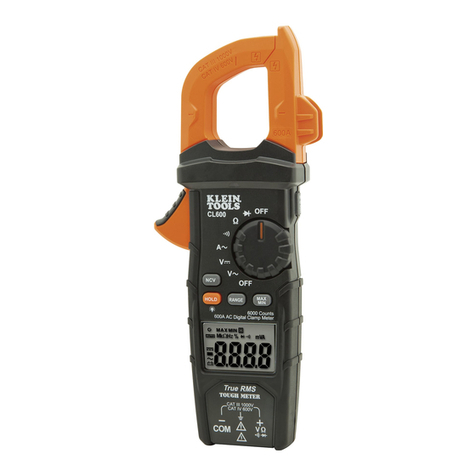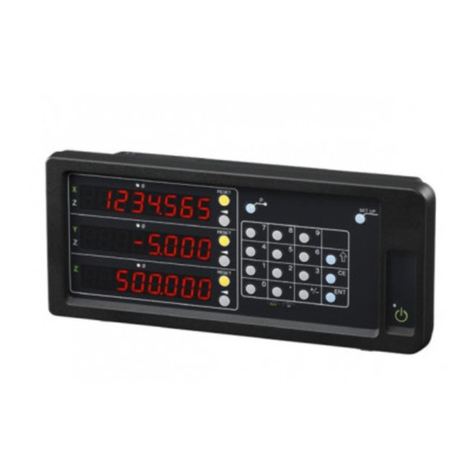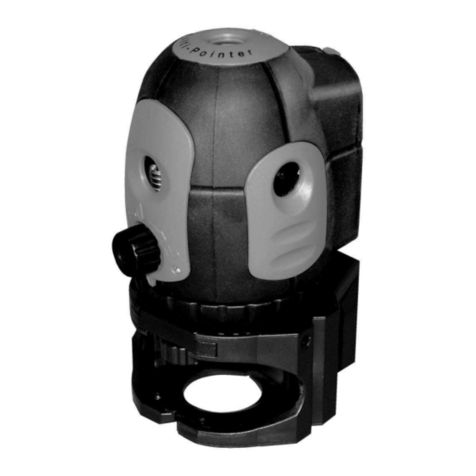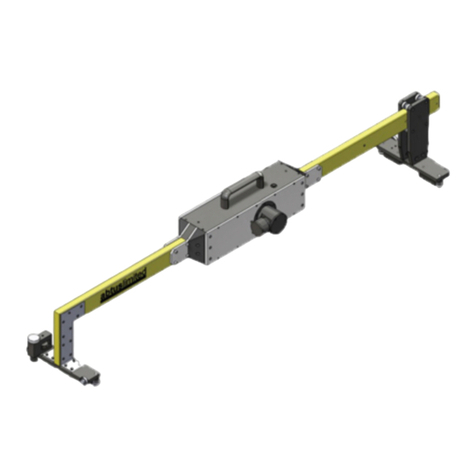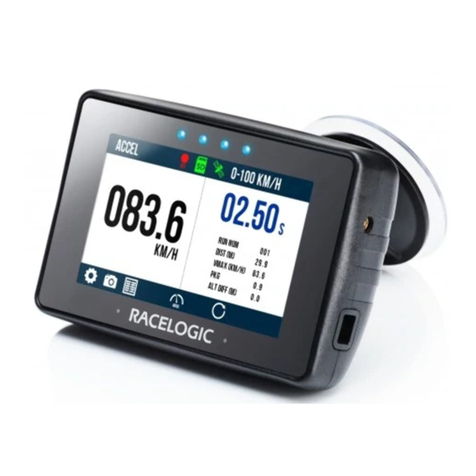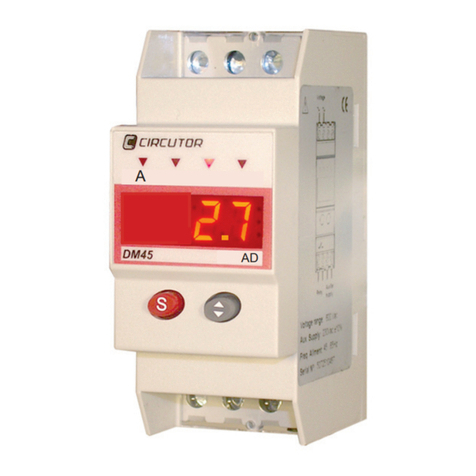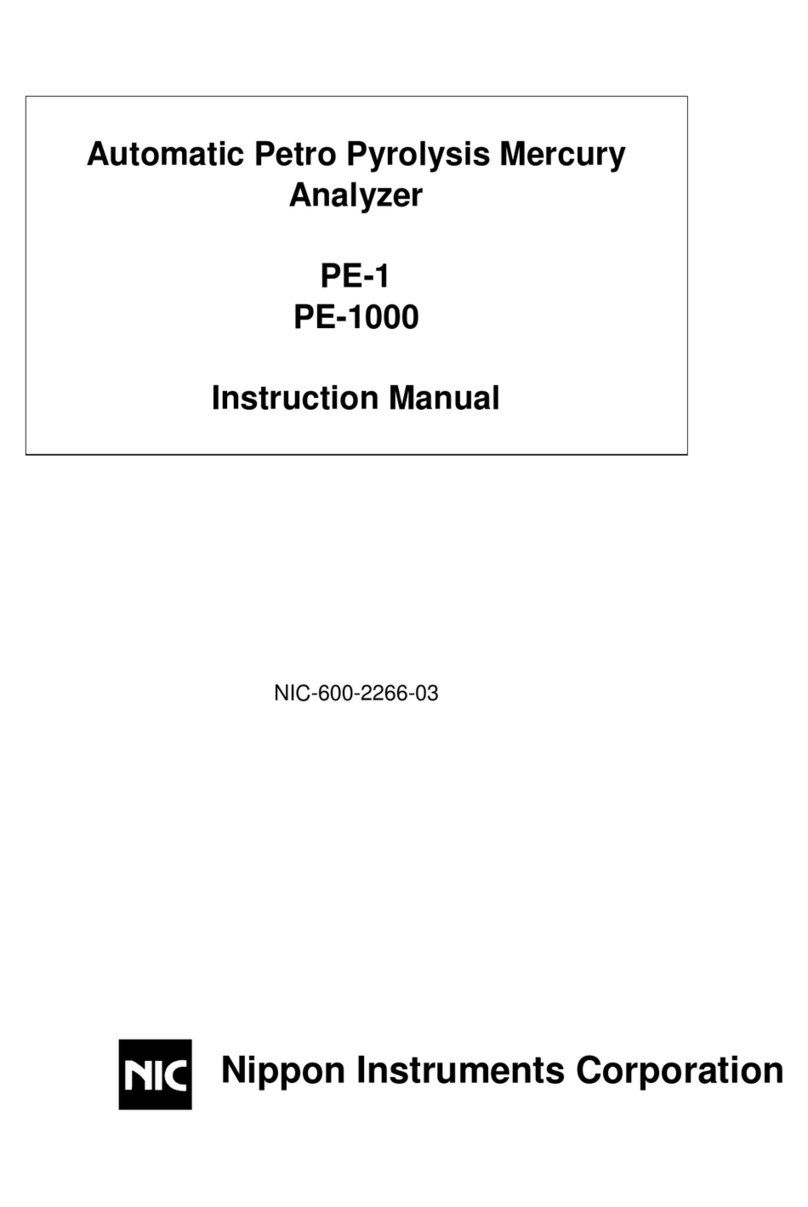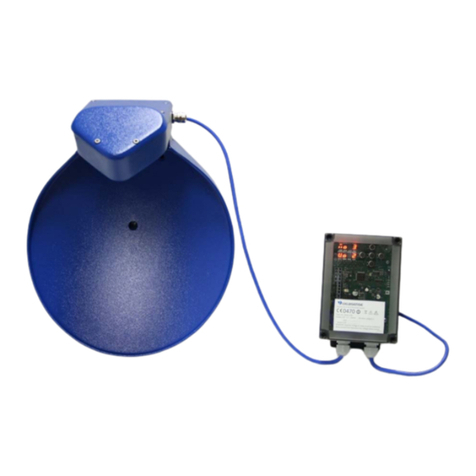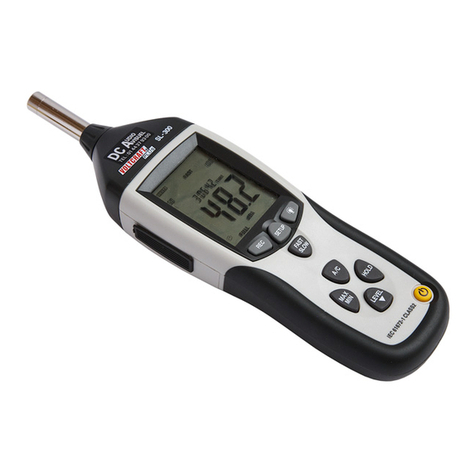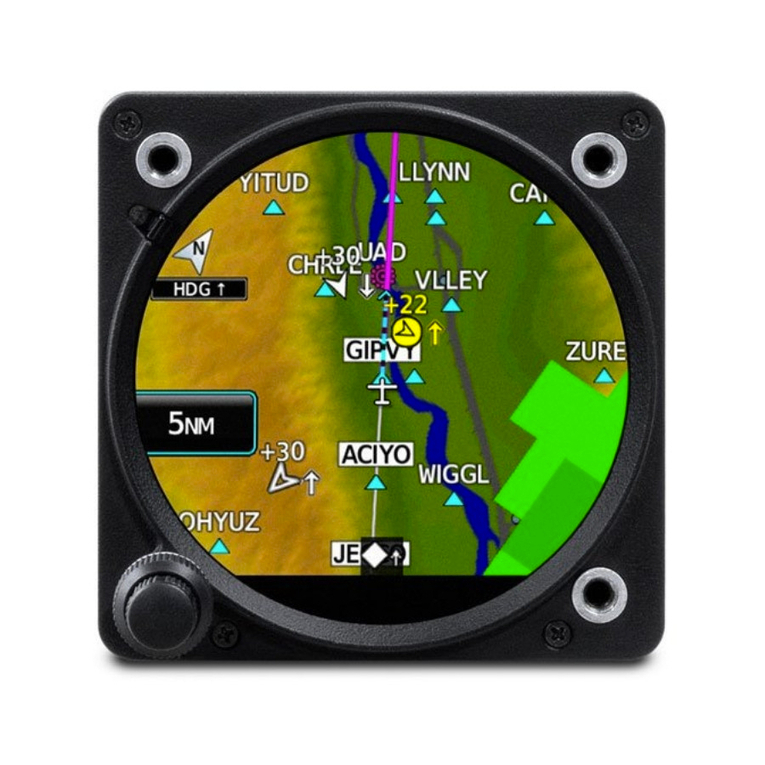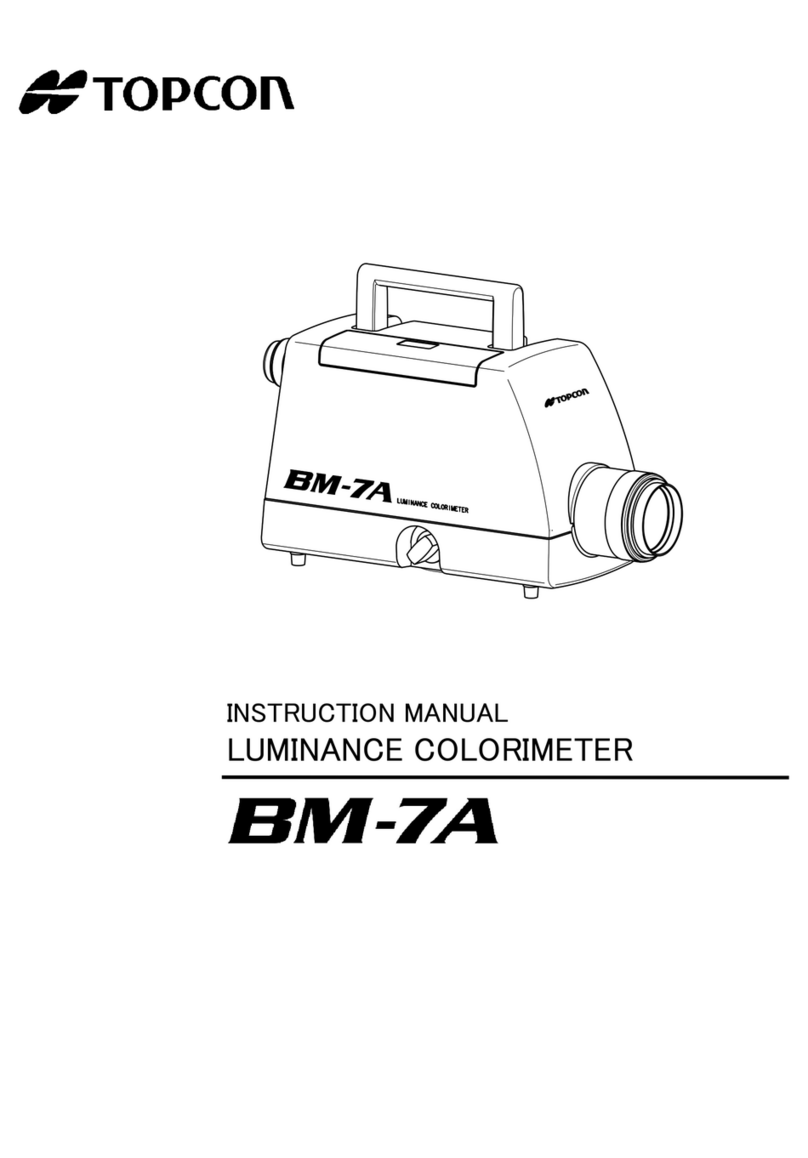Data Translation DT9871 User manual

User’s Manual for
UM-23654-Z
Standard TEMPpoint, VOLTpoint,
and MEASURpoint USB
Title Page
Instruments
DT9871, DT9871U, DT9872, DT9873, DT9874

Copyright Page
Trademark and Copyright Information
Measurement Computing Corporation, InstaCal, Universal Library, and the Measurement
Computing logo are either trademarks or registered trademarks of Measurement Computing
Corporation. Refer to the Copyrights & Trademarks section on mccdaq.com/legal for more
information about Measurement Computing trademarks.
Other product and company names mentioned herein are trademarks or trade names of their
respective companies.
© 2018 Measurement Computing Corporation. All rights reserved. No part of this publication
may be reproduced, stored in a retrieval system, or transmitted, in any form by any means,
electronic, mechanical, by photocopying, recording, or otherwise without the prior written
permission of Measurement Computing Corporation.
Notice
Measurement Computing Corporation does not authorize any Measurement Computing
Corporation product for use in life support systems and/or devices without prior written consent
from Measurement Computing Corporation. Life support devices/systems are devices or systems
that, a) are intended for surgical implantation into the body, or b) support or sustain life and whose
failure to perform can be reasonably expected to result in injury. Measurement Computing
Corporation products are not designed with the components required, and are not subject to the
testing required to ensure a level of reliability suitable for the treatment and diagnosis of people.

Radio and Television Interference
This equipment has been tested and found to comply with CISPR EN55011 Class A and
EN61326-1 requirements and also with the limits for a Class A digital device, pursuant to Part
15 of the FCC Rules. These limits are designed to provide reasonable protection against
harmful interference when the equipment is operated in a commercial environment. This
equipment generates, uses, and can radiate radio frequency energy and, if not installed and
used in accordance with the instruction manual, may cause harmful interference to radio
communications. Operation of this equipment in a residential area is likely to cause harmful
interference, in which case the user will be required to correct the interference at his own
expense.
Changes or modifications to this equipment not expressly approved by Data Translation could
void your authority to operate the equipment under Part 15 of the FCC Rules.
Note: This product was verified to meet FCC requirements under test conditions that
included use of shielded cables and connectors between system components. It is important
that you use shielded cables and connectors to reduce the possibility of causing interference
to radio, television, and other electronic devices.
Canadian Department of Communications Statement
This digital apparatus does not exceed the Class A limits for radio noise emissions from
digital apparatus set out in the Radio Interference Regulations of the Canadian Department of
Communications.
Le présent appareil numérique n’émet pas de bruits radioélectriques dépassant les limites
applicables aux appareils numériques de la class A prescrites dans le Règlement sur le
brouillage radioélectrique édicté par le Ministère des Communications du Canada.
FCC
Page


5
Table of Contents
About this Manual . . . . . . . . . . . . . . . . . . . . . . . . . . . . . . . . . . . . . . . . . . . . . . . . . . . . . . 9
Intended Audience. . . . . . . . . . . . . . . . . . . . . . . . . . . . . . . . . . . . . . . . . . . . . . . . . . . . . . . . . . . . . 9
How this Manual is Organized . . . . . . . . . . . . . . . . . . . . . . . . . . . . . . . . . . . . . . . . . . . . . . . . . 10
Conventions Used in this Manual . . . . . . . . . . . . . . . . . . . . . . . . . . . . . . . . . . . . . . . . . . . . . . . 10
Related Information . . . . . . . . . . . . . . . . . . . . . . . . . . . . . . . . . . . . . . . . . . . . . . . . . . . . . . . . . . . 11
Where To Get Help. . . . . . . . . . . . . . . . . . . . . . . . . . . . . . . . . . . . . . . . . . . . . . . . . . . . . . . . . . . . 11
Chapter 1: Overview . . . . . . . . . . . . . . . . . . . . . . . . . . . . . . . . . . . . . . . . . . . . . . . . . . . 13
Hardware Features. . . . . . . . . . . . . . . . . . . . . . . . . . . . . . . . . . . . . . . . . . . . . . . . . . . . . . . . . . . . 14
TEMPpoint Features . . . . . . . . . . . . . . . . . . . . . . . . . . . . . . . . . . . . . . . . . . . . . . . . . . . . . . . 14
VOLTpoint Features . . . . . . . . . . . . . . . . . . . . . . . . . . . . . . . . . . . . . . . . . . . . . . . . . . . . . . . 16
MEASURpoint Features . . . . . . . . . . . . . . . . . . . . . . . . . . . . . . . . . . . . . . . . . . . . . . . . . . . . 17
Supported Software . . . . . . . . . . . . . . . . . . . . . . . . . . . . . . . . . . . . . . . . . . . . . . . . . . . . . . . . . . . 19
Accessories . . . . . . . . . . . . . . . . . . . . . . . . . . . . . . . . . . . . . . . . . . . . . . . . . . . . . . . . . . . . . . . . . . 21
Getting Started Procedure. . . . . . . . . . . . . . . . . . . . . . . . . . . . . . . . . . . . . . . . . . . . . . . . . . . . . . 22
Part 1: Getting Started . . . . . . . . . . . . . . . . . . . . . . . . . . . . . . . . . . . . . 23
Chapter 2: Preparing to Use the
Instrument . . . . . . . . . . . . . . . . . . . . . . . . . . . . . . . . . . . . . . . . . . . . . . . . . . . . . . . . . . . 25
Unpacking . . . . . . . . . . . . . . . . . . . . . . . . . . . . . . . . . . . . . . . . . . . . . . . . . . . . . . . . . . . . . . . . . . . 27
Checking the System Requirements . . . . . . . . . . . . . . . . . . . . . . . . . . . . . . . . . . . . . . . . . . . . . 28
Installing the Software. . . . . . . . . . . . . . . . . . . . . . . . . . . . . . . . . . . . . . . . . . . . . . . . . . . . . . . . . 29
Viewing the Documentation . . . . . . . . . . . . . . . . . . . . . . . . . . . . . . . . . . . . . . . . . . . . . . . . . . . . 30
Chapter 3: Setting Up and Installing
the Instrument . . . . . . . . . . . . . . . . . . . . . . . . . . . . . . . . . . . . . . . . . . . . . . . . . . . . . . . . 31
Applying Power . . . . . . . . . . . . . . . . . . . . . . . . . . . . . . . . . . . . . . . . . . . . . . . . . . . . . . . . . . . . . . 33
Attaching the Instrument to the Computer . . . . . . . . . . . . . . . . . . . . . . . . . . . . . . . . . . . . . . . 35
Connecting Directly to the USB Ports . . . . . . . . . . . . . . . . . . . . . . . . . . . . . . . . . . . . . . . . 35
Connecting to an Expansion Hub . . . . . . . . . . . . . . . . . . . . . . . . . . . . . . . . . . . . . . . . . . . 38
Configuring the Device Driver . . . . . . . . . . . . . . . . . . . . . . . . . . . . . . . . . . . . . . . . . . . . . . . . . 40
Chapter 4: Wiring Signals . . . . . . . . . . . . . . . . . . . . . . . . . . . . . . . . . . . . . . . . . . . . . . . 41
General Wiring Recommendations . . . . . . . . . . . . . . . . . . . . . . . . . . . . . . . . . . . . . . . . . . . . . . 43
Warm-Up Time . . . . . . . . . . . . . . . . . . . . . . . . . . . . . . . . . . . . . . . . . . . . . . . . . . . . . . . . . . . . . . . 44
Connecting Thermocouple Inputs . . . . . . . . . . . . . . . . . . . . . . . . . . . . . . . . . . . . . . . . . . . . . . . 45
Connecting RTD Inputs. . . . . . . . . . . . . . . . . . . . . . . . . . . . . . . . . . . . . . . . . . . . . . . . . . . . . . . . 47
4-Wire RTD Connections . . . . . . . . . . . . . . . . . . . . . . . . . . . . . . . . . . . . . . . . . . . . . . . . . . . 48
3-Wire RTD Connections . . . . . . . . . . . . . . . . . . . . . . . . . . . . . . . . . . . . . . . . . . . . . . . . . . . 48
2-Wire RTD Connections . . . . . . . . . . . . . . . . . . . . . . . . . . . . . . . . . . . . . . . . . . . . . . . . . . . 49
Table of Contents

Contents
6
Connecting Voltage Inputs . . . . . . . . . . . . . . . . . . . . . . . . . . . . . . . . . . . . . . . . . . . . . . . . . . . . . 51
Connecting Voltage Inputs to Thermocouple Channels . . . . . . . . . . . . . . . . . . . . . . . . . 51
Connecting Voltage Inputs to RTD Channels . . . . . . . . . . . . . . . . . . . . . . . . . . . . . . . . . . 53
Connecting Voltage Inputs to Voltage Channels . . . . . . . . . . . . . . . . . . . . . . . . . . . . . . . 54
Connecting Current Loop Inputs. . . . . . . . . . . . . . . . . . . . . . . . . . . . . . . . . . . . . . . . . . . . . . . . 56
Connecting Current Loop Inputs to Thermocouple Channels. . . . . . . . . . . . . . . . . . . . 56
Connecting Current Loop Inputs to RTD Channels. . . . . . . . . . . . . . . . . . . . . . . . . . . . . 58
Connecting Current Loop Inputs to Voltage Channels . . . . . . . . . . . . . . . . . . . . . . . . . . 59
Connecting Digital I/O Signals . . . . . . . . . . . . . . . . . . . . . . . . . . . . . . . . . . . . . . . . . . . . . . . . . 60
Connecting Digital Input Signals . . . . . . . . . . . . . . . . . . . . . . . . . . . . . . . . . . . . . . . . . . . . 61
Connecting Digital Output Signals. . . . . . . . . . . . . . . . . . . . . . . . . . . . . . . . . . . . . . . . . . . 62
Chapter 5: Verifying the Operation
of Your Instrument. . . . . . . . . . . . . . . . . . . . . . . . . . . . . . . . . . . . . . . . . . . . . . . . . . . . . 63
Overview . . . . . . . . . . . . . . . . . . . . . . . . . . . . . . . . . . . . . . . . . . . . . . . . . . . . . . . . . . . . . . . . . . . . 65
Select the Instrument . . . . . . . . . . . . . . . . . . . . . . . . . . . . . . . . . . . . . . . . . . . . . . . . . . . . . . . . . . 66
Configure the Channels. . . . . . . . . . . . . . . . . . . . . . . . . . . . . . . . . . . . . . . . . . . . . . . . . . . . . . . . 68
Configure the Parameters of the Acquisition Config Window . . . . . . . . . . . . . . . . . . . . . . . 70
Configure the Appearance of the Channel Display Window . . . . . . . . . . . . . . . . . . . . . . . . 72
Configure the Appearance of the Channel Plot Window. . . . . . . . . . . . . . . . . . . . . . . . . . . . 73
Configure the Appearance of the Statistics Window . . . . . . . . . . . . . . . . . . . . . . . . . . . . . . . 76
Position the Windows . . . . . . . . . . . . . . . . . . . . . . . . . . . . . . . . . . . . . . . . . . . . . . . . . . . . . . . . . 77
Start the Measurement. . . . . . . . . . . . . . . . . . . . . . . . . . . . . . . . . . . . . . . . . . . . . . . . . . . . . . . . . 79
Part 2: Using Your Instrument. . . . . . . . . . . . . . . . . . . . . . . . . . . . . . . 81
Chapter 6: Principles of Operation . . . . . . . . . . . . . . . . . . . . . . . . . . . . . . . . . . . . . . . 83
Block Diagrams. . . . . . . . . . . . . . . . . . . . . . . . . . . . . . . . . . . . . . . . . . . . . . . . . . . . . . . . . . . . . . . 84
DT9871U Block Diagram . . . . . . . . . . . . . . . . . . . . . . . . . . . . . . . . . . . . . . . . . . . . . . . . . . . 84
DT9871 Block Diagram. . . . . . . . . . . . . . . . . . . . . . . . . . . . . . . . . . . . . . . . . . . . . . . . . . . . . 85
DT9872 Block Diagram. . . . . . . . . . . . . . . . . . . . . . . . . . . . . . . . . . . . . . . . . . . . . . . . . . . . . 86
DT9873 Block Diagram. . . . . . . . . . . . . . . . . . . . . . . . . . . . . . . . . . . . . . . . . . . . . . . . . . . . . 87
DT9874 Block Diagram. . . . . . . . . . . . . . . . . . . . . . . . . . . . . . . . . . . . . . . . . . . . . . . . . . . . . 88
Analog Input Features. . . . . . . . . . . . . . . . . . . . . . . . . . . . . . . . . . . . . . . . . . . . . . . . . . . . . . . . . 89
Analog Input Channels . . . . . . . . . . . . . . . . . . . . . . . . . . . . . . . . . . . . . . . . . . . . . . . . . . . . 89
Thermocouple Input Channels . . . . . . . . . . . . . . . . . . . . . . . . . . . . . . . . . . . . . . . . . . 90
Cold Junction Compensation . . . . . . . . . . . . . . . . . . . . . . . . . . . . . . . . . . . . . . . . 91
Open Thermocouple Detection. . . . . . . . . . . . . . . . . . . . . . . . . . . . . . . . . . . . . . . 91
RTD Channels . . . . . . . . . . . . . . . . . . . . . . . . . . . . . . . . . . . . . . . . . . . . . . . . . . . . . . . . 92
Input Ranges . . . . . . . . . . . . . . . . . . . . . . . . . . . . . . . . . . . . . . . . . . . . . . . . . . . . . . . . . . . . . 92
Out of Range Data for Thermocouple Channels . . . . . . . . . . . . . . . . . . . . . . . . . . . 93
Out of Range Data for RTD Channels . . . . . . . . . . . . . . . . . . . . . . . . . . . . . . . . . . . . 94

Contents
7
Out of Range Data for Voltage Channels . . . . . . . . . . . . . . . . . . . . . . . . . . . . . . . . . . 94
Resolution. . . . . . . . . . . . . . . . . . . . . . . . . . . . . . . . . . . . . . . . . . . . . . . . . . . . . . . . . . . . . . . . 94
Calibration . . . . . . . . . . . . . . . . . . . . . . . . . . . . . . . . . . . . . . . . . . . . . . . . . . . . . . . . . . . . . . . 94
Sample Clock Source . . . . . . . . . . . . . . . . . . . . . . . . . . . . . . . . . . . . . . . . . . . . . . . . . . . . . . 95
Trigger Source . . . . . . . . . . . . . . . . . . . . . . . . . . . . . . . . . . . . . . . . . . . . . . . . . . . . . . . . . . . . 95
Conversion Modes . . . . . . . . . . . . . . . . . . . . . . . . . . . . . . . . . . . . . . . . . . . . . . . . . . . . . . . . 96
Specifying Analog Input Channels . . . . . . . . . . . . . . . . . . . . . . . . . . . . . . . . . . . . . . 96
How Continuous Scan Works . . . . . . . . . . . . . . . . . . . . . . . . . . . . . . . . . . . . . . . . . . . 96
Filtering. . . . . . . . . . . . . . . . . . . . . . . . . . . . . . . . . . . . . . . . . . . . . . . . . . . . . . . . . . . . . . . . . . 97
Data Format . . . . . . . . . . . . . . . . . . . . . . . . . . . . . . . . . . . . . . . . . . . . . . . . . . . . . . . . . . . . . . 97
Data Format for Thermocouple Channels . . . . . . . . . . . . . . . . . . . . . . . . . . . . . . . . . 98
Data Format for RTD Channels . . . . . . . . . . . . . . . . . . . . . . . . . . . . . . . . . . . . . . . . . 98
Data Format for Voltage Channels . . . . . . . . . . . . . . . . . . . . . . . . . . . . . . . . . . . . . . . 98
Error Conditions . . . . . . . . . . . . . . . . . . . . . . . . . . . . . . . . . . . . . . . . . . . . . . . . . . . . . . . . . . 98
Digital I/O Features. . . . . . . . . . . . . . . . . . . . . . . . . . . . . . . . . . . . . . . . . . . . . . . . . . . . . . . . . . 100
Digital Input Lines . . . . . . . . . . . . . . . . . . . . . . . . . . . . . . . . . . . . . . . . . . . . . . . . . . . . . . . 100
Digital Output Lines . . . . . . . . . . . . . . . . . . . . . . . . . . . . . . . . . . . . . . . . . . . . . . . . . . . . . . 101
Channel-to-Channel Functional Isolation . . . . . . . . . . . . . . . . . . . . . . . . . . . . . . . . . . . . 101
Resolution. . . . . . . . . . . . . . . . . . . . . . . . . . . . . . . . . . . . . . . . . . . . . . . . . . . . . . . . . . . . . . . 101
Operation Modes. . . . . . . . . . . . . . . . . . . . . . . . . . . . . . . . . . . . . . . . . . . . . . . . . . . . . . . . . 101
Chapter 7: Troubleshooting . . . . . . . . . . . . . . . . . . . . . . . . . . . . . . . . . . . . . . . . . . . . 103
General Checklist . . . . . . . . . . . . . . . . . . . . . . . . . . . . . . . . . . . . . . . . . . . . . . . . . . . . . . . . . . . . 104
Technical Support . . . . . . . . . . . . . . . . . . . . . . . . . . . . . . . . . . . . . . . . . . . . . . . . . . . . . . . . . . . 106
If Your Instrument Needs Factory Service . . . . . . . . . . . . . . . . . . . . . . . . . . . . . . . . . . . . . . . 107
Appendix A: Specifications . . . . . . . . . . . . . . . . . . . . . . . . . . . . . . . . . . . . . . . . . . . . 109
Basic Instrument Specifications . . . . . . . . . . . . . . . . . . . . . . . . . . . . . . . . . . . . . . . . . . . . . . . . 110
Thermocouple Specifications . . . . . . . . . . . . . . . . . . . . . . . . . . . . . . . . . . . . . . . . . . . . . . . . . . 111
System Temperature Error for the DT9871U and DT9874 . . . . . . . . . . . . . . . . . . . . . . 112
System Temperature Error for the DT9871 . . . . . . . . . . . . . . . . . . . . . . . . . . . . . . . . . . . 114
RTD Specifications . . . . . . . . . . . . . . . . . . . . . . . . . . . . . . . . . . . . . . . . . . . . . . . . . . . . . . . . . . . 116
Temperature Specifications. . . . . . . . . . . . . . . . . . . . . . . . . . . . . . . . . . . . . . . . . . . . . . . . . . . . 117
Voltage Measurement Specifications. . . . . . . . . . . . . . . . . . . . . . . . . . . . . . . . . . . . . . . . . . . . 119
Isolation and Protection Specifications . . . . . . . . . . . . . . . . . . . . . . . . . . . . . . . . . . . . . . . . . . 121
Memory Specifications . . . . . . . . . . . . . . . . . . . . . . . . . . . . . . . . . . . . . . . . . . . . . . . . . . . . . . . 122
Digital I/O Specifications . . . . . . . . . . . . . . . . . . . . . . . . . . . . . . . . . . . . . . . . . . . . . . . . . . . . . 123
Power, Physical, and Environmental Specifications . . . . . . . . . . . . . . . . . . . . . . . . . . . . . . 124
Regulatory Specifications . . . . . . . . . . . . . . . . . . . . . . . . . . . . . . . . . . . . . . . . . . . . . . . . . . . . . 125
Connector Specifications . . . . . . . . . . . . . . . . . . . . . . . . . . . . . . . . . . . . . . . . . . . . . . . . . . . . . . 126
Thermocouple Connectors. . . . . . . . . . . . . . . . . . . . . . . . . . . . . . . . . . . . . . . . . . . . . . . . . 126
RTD Connectors . . . . . . . . . . . . . . . . . . . . . . . . . . . . . . . . . . . . . . . . . . . . . . . . . . . . . . . . . 127

Contents
8
Voltage Connectors . . . . . . . . . . . . . . . . . . . . . . . . . . . . . . . . . . . . . . . . . . . . . . . . . . . . . . . 127
External Power Supply Specifications. . . . . . . . . . . . . . . . . . . . . . . . . . . . . . . . . . . . . . . . . . . 128
Appendix B: Connector Pin Assignments . . . . . . . . . . . . . . . . . . . . . . . . . . . . . . . . 129

9
About this Manual
TEMPpoint™ is a family of temperature measurement instruments that includes the DT9871,
DT9871U, DT8871, DT8871U, DT9872, and DT8872. This manual describes the DT9871,
DT9871U, and DT9872 USB models.
VOLTpoint™ is a family of voltage measurement instruments that includes the DT9873 and
DT8873. This manual describes the DT9873 USB model.
MEASURpoint™ a family of mixed temperature and voltage measurement instruments that
includes the DT9874 andDT8874. This manual describes the DT9874 USB model.
Note: For information on the DT8871U, DT8871, DT8872, DT8873, and DT8874 LXI models
of TEMPpoint, VOLTpoint, and MEASURpoint, refer to the User’s Manual for Standard
TEMPpoint, VOLTpoint, and MEASURpoint LXI Instruments.
The first part of this manual describes how to install and set up your instrument, and verify
that the instrument is working properly.
The second part of this manual describes the features and capabilities of your instrument
using the IVI-COM instrument driver software. Troubleshooting information is also provided.
Note: If you are programming the instrument using the IVI-COM driver, refer to the
DtxMeasurement IVI-COM driver online help for more information.
Intended Audience
This document is intended for engineers, scientists, technicians, or others responsible for
using and/or programming a TEMPpoint, VOLTpoint, or MEASURpoint instrument in the
Microsoft® Windows® XP, Windows Vista®, Windows 7, or Windows 8 operating system. It is
assumed that you have some familiarity with thermocouples, RTDs, and/or voltages and that
you understand your application.

About this Manual
10
How this Manual is Organized
This manual is organized as follows:
•Chapter 1, “Overview,” summarizes the major features of the TEMPpoint, VOLTpoint,
and MEASURpoint instruments, as well as the supported software and accessories.
•Chapter 2, “Preparing to Use the Instrument,” describes how to unpack the instrument,
check the system requirements, install the software, and view the documentation online.
•Chapter 3, “Setting Up and Installing the Instrument,” describes how to apply power to
the instrument and connect the instrument to your computer.
•Chapter 4, “Wiring Signals,” describes how to wire signals to the instrument.
•Chapter 5, “Verifying the Operation of Your Instrument,” describes how to verify the
operation of the instrument.
•Chapter 6, “Principles of Operation,” describes the analog input and digital I/O features
of the TEMPpoint, VOLTpoint, and MEASURpoint instruments in detail.
•Chapter 7, “Troubleshooting,” provides information that you can use to resolve problems
with your instrument, should they occur.
•Appendix A, “Specifications,” lists the specifications of the TEMPpoint, VOLTpoint, and
MEASURpoint instruments.
•Appendix B, “Connector Pin Assignments,” describes the pin assignments of the digital
I/O connector on the TEMPpoint, VOLTpoint, and MEASURpoint instruments.
• An index completes this manual.
Conventions Used in this Manual
The following conventions are used in this manual:
• Notes provide useful information or information that requires special emphasis, cautions
provide information to help you avoid losing data or damaging your equipment, and
warnings provide information to help you avoid catastrophic damage to yourself or your
equipment.
• Items that you select or type are shown in bold.
• CAUTION – This icon denotes a caution, which advises you to consult the
documentation where this symbol is marked.
CAUTION – Do not operate this product in a manner not specified in this document.
Product misuse can result in a hazard. You can compromise the safety protection built into
the product if the product is damaged in any way.

About this Manual
11
Related Information
Refer to the following documents for more information on using a TEMPpoint, VOLTpoint, or
MEASURpoint USB instrument:
• DtxMeasurement IVI-COM Driver online help. This document describes how to use the
IVI-COM driver to access the capabilities of a TEMPpoint, VOLTpoint, or MEASURpoint
instrument.
The IVI-COM driver works with any development environment that supports COM
programming, including MATLAB® from The MathWorksTM, Microsoft® Visual C#®.NET
or Visual Basic®.NET, Agilent® VEE Pro, National Instruments™ LabVIEW™ or
LabWindows™, and so on.
•QuickDAQ User’s Manual (UM-25242). This manual describes how to create a QuickDAQ
application to acquire and analyze data from a TEMPpoint, VOLTpoint, or MEASURpoint
instrument.
• IVI foundation (www.ivifoundation.org)
• Omega Complete Temperature Measurement Handbook and Encyclopedia® or the Omega
Engineering web site: http://www.omega.com. Both resources provide valuable
information on thermocouple types, RTD types, standards, and linearization.
Where To Get Help
Should you run into problems installing or using a TEMPpoint, VOLTpoint, or MEASURpoint
instrument, the Data Translation Technical Support Department is available to provide
technical assistance. Refer to Chapter 7 for more information. If you are outside the United
States or Canada, call your local distributor, whose number is listed on our web site
(www.mccdaq.com).

About this Manual
12

13
1
Overview
Hardware Features. . . . . . . . . . . . . . . . . . . . . . . . . . . . . . . . . . . . . . . . . . . . . . . . . . . . . . . . . . . . 14
Supported Software . . . . . . . . . . . . . . . . . . . . . . . . . . . . . . . . . . . . . . . . . . . . . . . . . . . . . . . . . . . 19
Accessories . . . . . . . . . . . . . . . . . . . . . . . . . . . . . . . . . . . . . . . . . . . . . . . . . . . . . . . . . . . . . . . . . . 21
Getting Started Procedure. . . . . . . . . . . . . . . . . . . . . . . . . . . . . . . . . . . . . . . . . . . . . . . . . . . . . . 22

Chapter 1
14
Hardware Features
Data Translation provides a number of USB instruments to meet your measurement needs,
including the following:
• TEMPpoint – a family of temperature measurement instruments
• VOLTpoint – a family of voltage measurement instruments
• MEASURpoint – a family of mixed temperature and voltage measurement instruments
All of these instruments support Version 2.0 and 1.1 of the USB bus.
The following sections summarize the features of the TEMPpoint, VOLTpoint, and
MEASURpoint USB instruments.
TEMPpoint Features
TEMPpoint instruments include the following models: DT9871U, DT9871, and DT9872.
Figure 1 shows a DT9871U instrument.
Figure 1: TEMPpoint Instrument
The key features of TEMPpoint instruments are as follows:
• DT9871U and DT9871:
Configurable analog input channels for thermocouple or differential voltage inputs;
easy-access jacks for each channel for quick wiring
One CJC (cold junction compensation) input for each thermocouple channel

Overview
15
B, E, J, K, N, R, S, and T thermocouple types supported; the instrument automatically
linearizes the measurements and returns the data as a 32-bit, floating-point
temperature values
Input range of ±0.075 V for the DT9871U (with 0.25 V RMS A/D noise using no
software filtering) and ±1.25 V for the DT9871 (with 5 V RMS A/D noise using no
software filtering)
Break-detection circuitry to detect open thermocouple inputs
• DT9872:
Configurable analog input channels for RTDs and differential voltage inputs;
easy-access jacks for each channel for quick wiring
100 , 500 , and 1000 platinum RTD types supported using alpha curves of 0.00385
(European) or 0.00392 (American)
4-wire, 3-wire, or 2-wire configurations; the DT9872 automatically linearizes the
measurements and returns the data as 32-bit, floating-point temperature, resistance, or
voltage values
Input range of ±1.25 V
• One 24-bit, Delta-Sigma A/D converter per channel for simultaneous, high-resolution
measurements
• Throughput rate of up to 10 Samples/s for all channels.
• Software or external, digital trigger on digital input line 0 starts acquisition
• Auto-calibrating front-end resets the zero point on each power-up; in addition, the
instrument supports anytime calibration, performing an auto-calibration function on
software command
• Measurement Calibration Utility allows you to calibrate the instrument in the field (see
page 20 for more information on this utility)
• 8 opto-isolated digital input lines; you can read the digital input port through the analog
input data stream for correlating analog and digital measurements
• 8 opto-isolated digital output lines; the outputs are solid-state relays that operate from
±30 V at currents up to 400 mA (peak) AC or DC

Chapter 1
16
VOLTpoint Features
Figure 2 shows a VOLTpoint instrument.
Figure 2: VOLTpoint Instrument
The key features of VOLTpoint (DT9873) instruments are as follows:
• Direct connection of analog input channels for differential voltage inputs; removable
screw terminal blocks for each channel for quick wiring
• One 24-bit, Delta-Sigma A/D converter per channel for simultaneous, high-resolution
measurements
• Software-selectable input range of ±10 V or ±60 V per channel (note that for the ±60 V
range, no more than 30 Vrms, 42.4 Vpk, 60 VDC is allowed)
• Throughput rate of up to 10 Samples/s for all channels
• Software or external, digital trigger on digital input line 0 starts acquisition
• Auto-calibrating front-end resets the zero point on each power-up; in addition, the
instrument supports anytime calibration, performing an auto-calibration function on
software command
• Measurement Calibration Utility allows you to calibrate the instrument in the field (see
page 20 for more information on this utility)
• 8 opto-isolated digital input lines; you can read the digital input port through the analog
input data stream for correlating analog and digital measurements
• 8 opto-isolated digital output lines; the outputs are solid-state relays that operate from
±30 V at currents up to 400 mA (peak) AC or DC

Overview
17
MEASURpoint Features
The standard MEASURpoint (DT9874) instrument provides 16 thermocouple channels, 16
RTD channels, and 16 voltage channels. Figure 3 shows a MEASURpoint instrument.
Figure 3: MEASURpoint Instrument
The key features of MEASURpoint instruments are as follows:
• Analog Input Channels 0 to 15:
Configurable channels for thermocouple or differential voltage inputs; easy-access
jacks for each channel for quick wiring
One CJC (cold junction compensation) input for each thermocouple channel
B, E, J, K, N, R, S, and T thermocouple types supported; the instrument automatically
linearizes the measurements and returns the data as a 32-bit, floating-point
temperature values
Input range of ±0.075 V (with 0.25 V RMS A/D noise using no software filtering)
Break-detection circuitry to detect open thermocouple inputs
• Analog Input Channels 16 to 31:
Configurable analog input channels for RTDs and differential voltage inputs;
easy-access jacks for each channel for quick wiring
100 , 500 , and 1000 platinum RTD types supported using alpha curves of 0.00385
(European) or 0.00392 (American)

Chapter 1
18
4-wire, 3-wire, or 2-wire configurations; the DT9872 automatically linearizes the
measurements and returns the data as 32-bit, floating-point temperature, resistance, or
voltage values
Input range of ±1.25 V
• Analog Input Channels 31 to 48:
Direct connection of analog input channels for differential voltage inputs; removable
screw terminal blocks for each channel for quick wiring
Software-selectable input range of ±10 V or ±60 V (note that for the ±60 V range, no
more than 30 Vrms, 42.4 Vpk, 60 VDC is allowed)
• One 24-bit, Delta-Sigma A/D converter per channel for simultaneous, high-resolution
measurements
• 30 VAC, 60 VDC continuous functional isolation ch-ch and ch-gnd, verified by a 500 Vpk
withstand
• Throughput rate of up to 10 Samples/s for all channels
• Software or external, digital trigger on digital input line 0 starts acquisition
• Auto-calibrating front-end resets the zero point on each power-up; in addition, the
instrument supports anytime calibration, performing an auto-calibration function on
software command
• Measurement Calibration Utility allows you to calibrate the instrument in the field (see
page 20 for more information on this utility)
• 8 opto-isolated digital input lines; you can read the digital input port through the analog
input data stream for correlating analog and digital measurements
• 8 opto-isolated digital output lines; the outputs are solid-state relays that operate from
±30 V at currents up to 400 mA (peak) AC or DC

Overview
19
Supported Software
The following software is available for use with the TEMPpoint, VOLTpoint, and
MEASURpoint USB instruments:
•QuickDAQ Base Version – The base version of QuickDAQ is free-of-charge and allows
you to acquire and analyze data from all Data Translation USB and Ethernet devices,
except the DT9841 Series, DT9817, DT9835, and DT9853/54. Using the base version of
QuickDAQ, you can perform the following functions:
Discover and select your devices.
Configure all input channel settings for the attached sensors.
Load/save multiple hardware configurations.
Generate output stimuli (fixed waveforms, swept sine waves, or noise signals).
On each supported data acquisition device, acquire data from all channels supported
in the input channel list.
Choose to acquire data continuously or for a specified duration.
Choose software or triggered acquisition.
Log acquired data to disk in an .hpf file.
Display acquired data during acquisition in either a digital display using the Channel
Display window or as a waveform in the Channel Plot window.
Choose linear or logarithmic scaling for the horizontal and vertical axes.
View statistics about the acquired data, including the minimum, maximum, delta, and
mean values and the standard deviation in the Statistics window.
Export time data to a .csv or .txt file; you can open the recorded data in Microsoft
Excel® for further analysis.
Read a previously recorded .hpf data file.
Customize many aspects of the acquisition, display, and recording functions to suit
your needs, including the acquisition duration, sampling frequency, trigger settings,
filter type, and temperature units to use.
•QuickDAQ FFT Analysis Option – When enabled with a purchased license key, the
QuickDAQ FFT Analysis option includes all the features of the QuickDAQ Base version
plus these features:
The ability to switch between the Data Logger time-based interface and the FFT
Analyzer block/average-based interface.
Supports software, freerun, or triggered acquisition with accept and reject controls for
impact testing applications.
Allows you to perform single-channel FFT (Fast Fourier Transform) operations,
including AutoSpectrum, Spectrum, and Power Spectral Density, on the acquired
analog input data. You can configure a number of parameters for the FFT, including
the FFT size, windowing type, averaging type, integration type, and so on.
Allows you to display frequency-domain data as amplitude or phase.

Chapter 1
20
Supports dB or linear scaling with RMS (root mean squared), peak, and peak-to-peak
scaling options
Supports linear or exponential averaging with RMS, vector, and peak hold averaging
options.
Supports windowed time channels.
Supports the following response window types: Hanning, Hamming, Bartlett,
Blackman, Blackman Harris, and Flat top.
Supports the ability to lock the waveform output to the analysis frame time.
Allows you to configure and view dynamic performance statistics, including the input
below full-scale (IBF), total harmonic distortion (THD), spurious free dynamic range
(SFDR), signal-to-noise and distortion ratio (SINAD), signal-to-noise ratio (SNR), and
the effective number of bits (ENOB), for selected time-domain channels in the Statistics
window.
Supports digital IIR (infinite impulse response) filters.
•QuickDAQ Advanced FFT Analysis Option – When enabled with a purchased software
license, the QuickDAQ Advanced FFT Analysis option includes all the features of the
QuickDAQ Base version with the FFT Analysis option plus these features:
Allows you to designate a channel as a Reference or Response channel.
Allows you to perform two-channel FFT analysis functions, including Frequency
Response Functions (Inertance, Mobility, Compliance, Apparent Mass, Impedance,
Dynamic Stiffness, or custom FRF) with H1, H2, or H3 estimator types,
Cross-Spectrum, Cross Power Spectral Density, Coherence, and Coherent Output
Power.
Supports the Exponential response window type.
Supports the following reference window types: Hanning, Hamming, Bartlett,
Blackman, Blackman Harris, FlatTop, Exponential, Force, and Cosine Taper windows.
Supports real, imaginary, and Nyquist display functions.
Allows you to save data in the .uff file format.
•DtxMeasurement IVI-COM driver – This driver provides access to the instrument’s
functions through a COM server. The IVI-COM driver works in any 32-bit or 64-bit
development environment that supports COM programming, including MATLAB, Visual
Basic.NET, Visual C#.NET, Agilent VEE Pro, LabVIEW, LabWindows, and others.
•Measurement Calibration Utility – Users can calibrate a TEMPpoint, VOLTpoint, or
MEASURpoint instrument in the field using precise calibration equipment and the
Measurement Calibration Utility. Since each instrument consists of up to 48 individual
channels, great care must be taken to ensure that proper warm-up times are followed and
precise calibration equipment is used.
The calibration utility ships with a comprehensive help file that describes the required
equipment and calibration procedure, including warm-up times, for each instrument.
The calibration utility allows you to revert to the factory calibration for any or all
channels, or revert back to the last user calibration values, if desired. In addition, this
utility generates a report that lists the starting and ending calibration values for each
channel, allowing traceability.
This manual suits for next models
4
Table of contents
Other Data Translation Measuring Instrument manuals
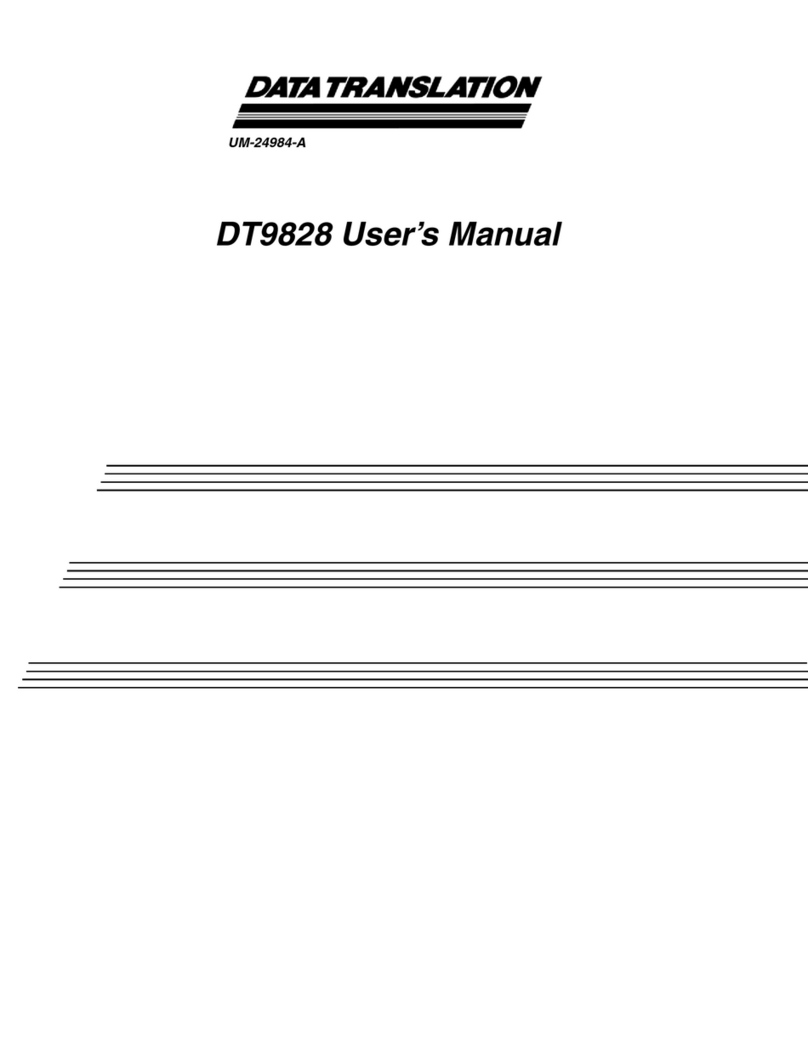
Data Translation
Data Translation DT9828 User manual
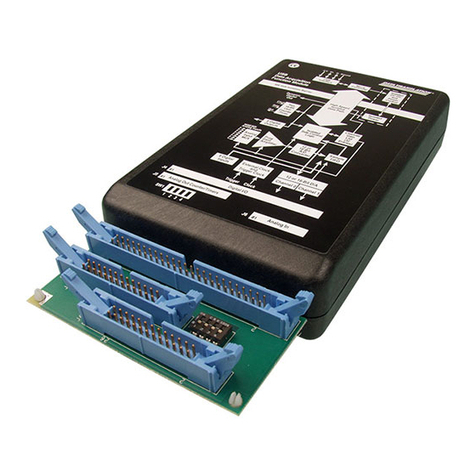
Data Translation
Data Translation DT9800 Series User manual
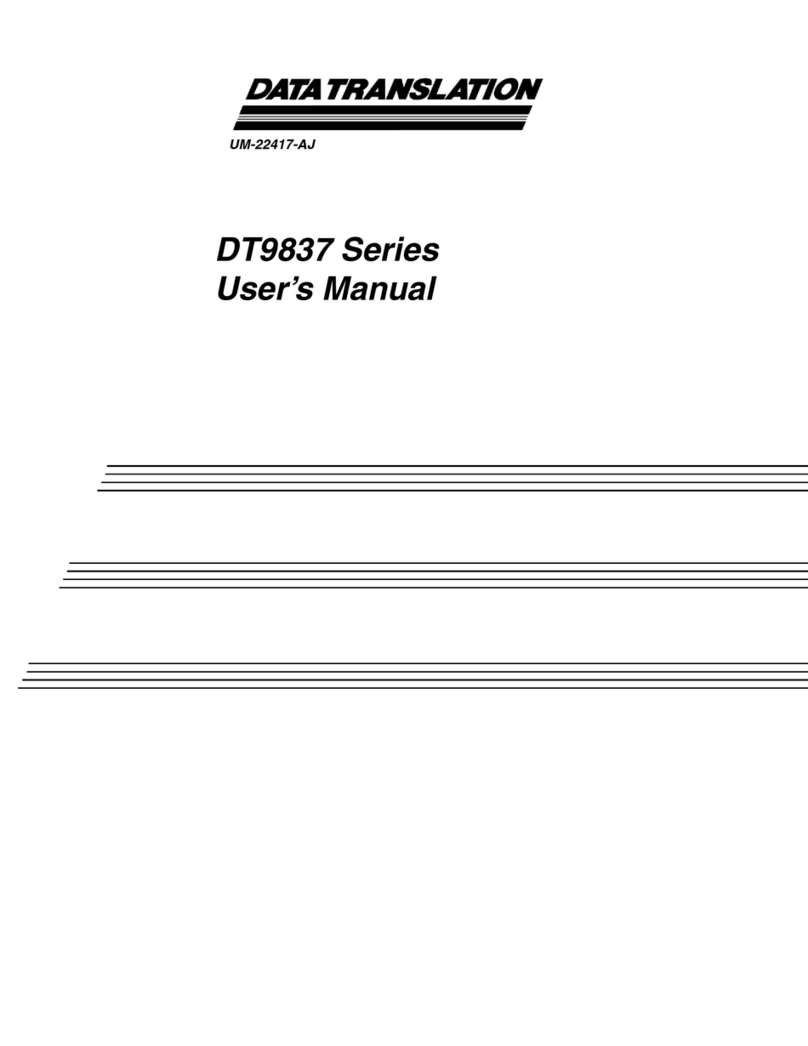
Data Translation
Data Translation DT9837A User manual
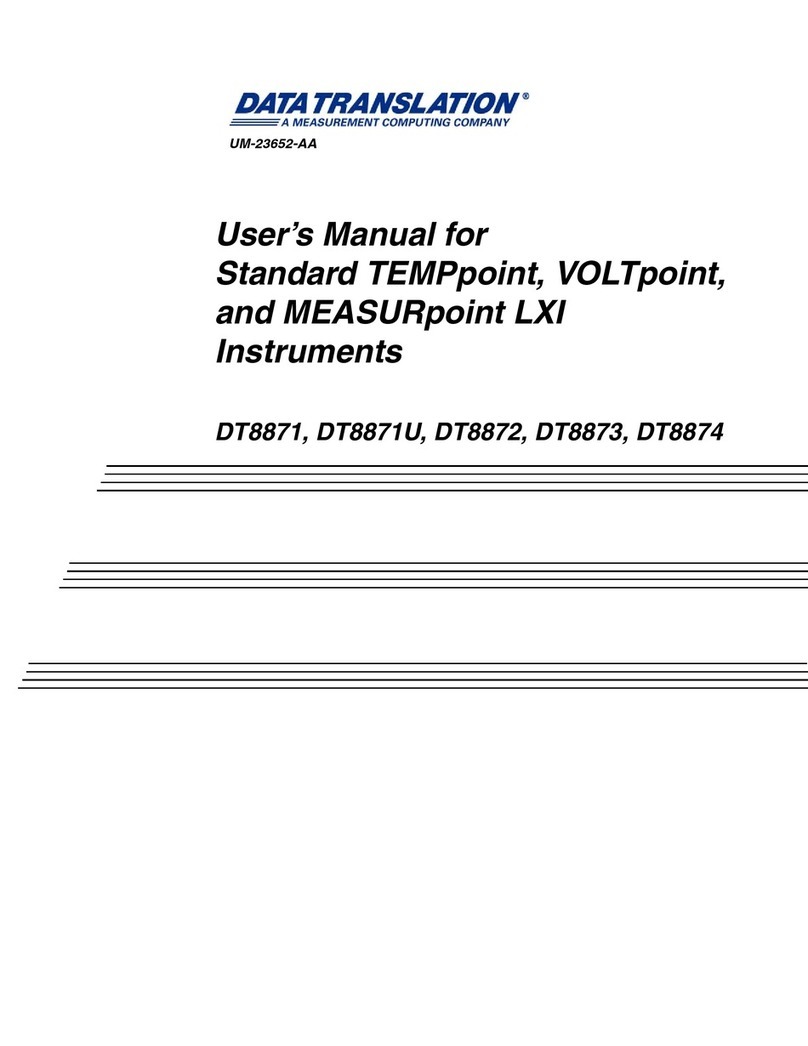
Data Translation
Data Translation DT8871 User manual

Data Translation
Data Translation DT9812 Series User manual
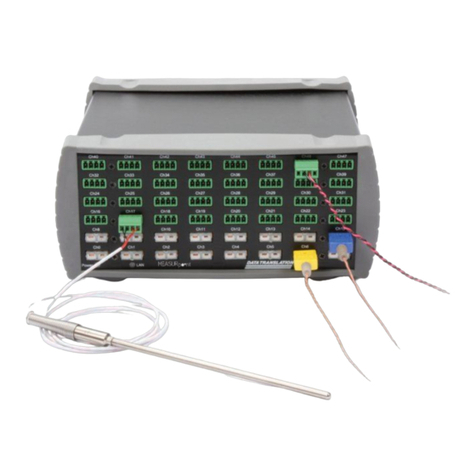
Data Translation
Data Translation DT9871U User manual

